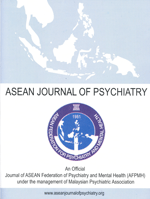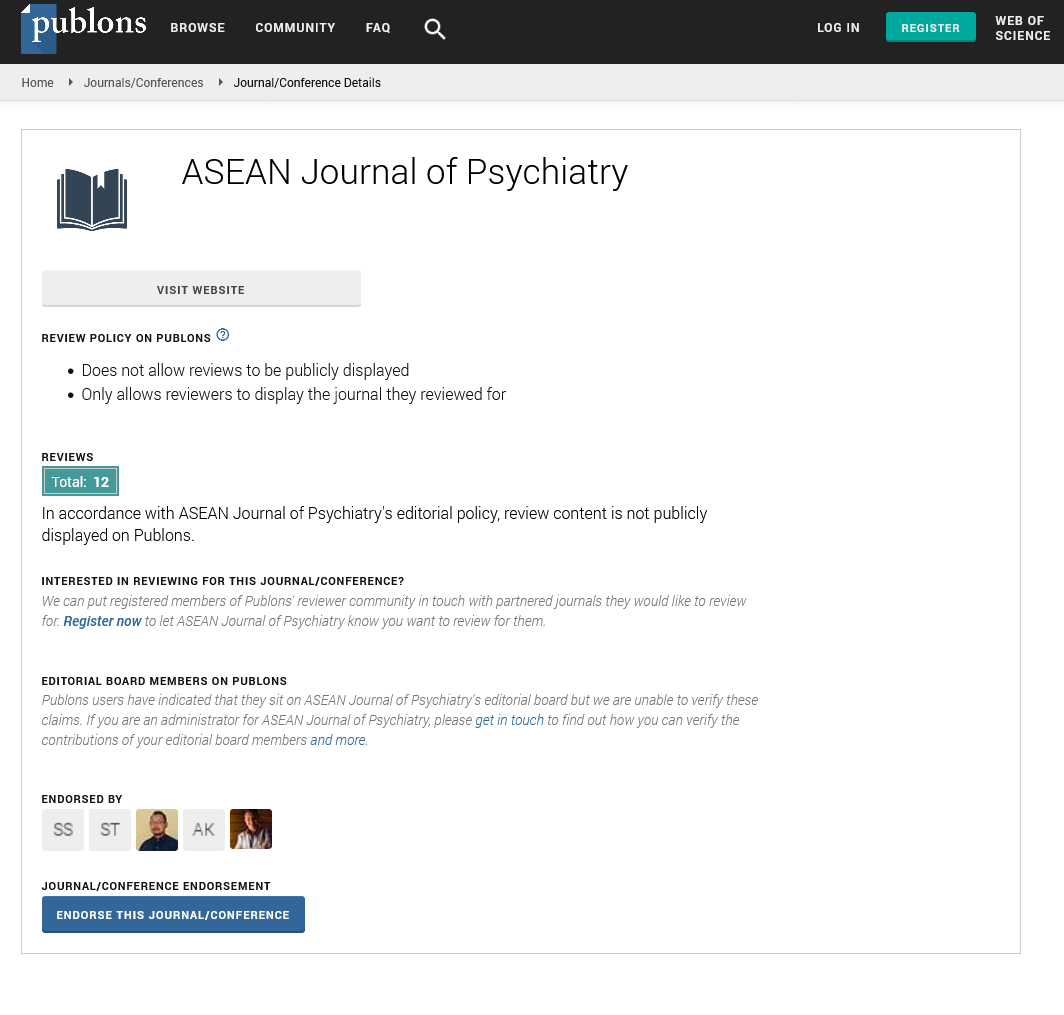


Google Scholar citation report
Citations : 5373
ASEAN Journal of Psychiatry received 5373 citations as per google scholar report
ASEAN Journal of Psychiatry peer review process verified at publons
| Journal Name | ASEAN Journal of Psychiatry (MyCite Report) | ||||
|---|---|---|---|---|---|
| Total Publications | 456 | ||||
| Total Citations | 5688 | ||||
| Total Non-self Citations | 12 | ||||
| Yearly Impact Factor | 0.93 | ||||
| 5-Year Impact Factor | 1.44 | ||||
| Immediacy Index | 0.1 | ||||
| Cited Half-life | 2.7 | ||||
| H-index | 30 | ||||
| Quartile |
|
- Anxiety Disorders
- Behavioural Science
- Biological Psychiatry
- Child and Adolescent Psychiatry
- Community Psychiatry
- Dementia
- Community Psychiatry
- Suicidal Behavior
- Social Psychiatry
- Psychiatry
- Psychiatry Diseases
- Psycho Trauma
- Posttraumatic Stress
- Psychiatric Symptoms
- Psychiatric Treatment
- Neurocognative Disorders (NCDs)
- Depression
- Mental Illness
- Neurological disorder
- Neurology
- Alzheimer's disease
- Parkinson's disease
Abstract
PSYCHOMETRIC PROPERTIES AND FACTOR INVARIANCE FOR THE GENERAL HEALTH QUESTIONNAIRE (GHQ-28): STUDY IN PERUVIAN POPULATION EXPOSED TO THE COVID-19 PANDEMIC
Author(s): Rita J. Ames-Guerreroa*, Victoria A. Barreda-Parrab and Julio C. Huamani-CahuacLarge-scale epidemics are known to significantly disrupt the mental health and perceived well-being of most populations. In spite of the wide range of screening tools, there are not many reliable and widespread tools for the identification of psychological symptoms in non-clinical populations during a health crisis.
Objective: The aim of this study was to conduct a psychometric analysis of the Goldberg's GHQ-28, through a sample of Peruvian adults by using a confirmatory factor analysis. Materials and Methods: 434 individuals have been examined, studying the goodness and structure of the Goldberg GHQ-28 questionnaire.
Result: We found high reliability indicating optimal values (Cronbach α=0.829), also there are four correlated factors that show strict invariance among the 28 items. Confirmatory factor analysis (CFA) and exploratory factor analysis (EFA) were used to examine the structure of the subscales. There are high levels of anxiety (X=1.01) and social dysfunction (X=1.21) in the assessed sampling. Conclusion: The factorial structure obtained in this study is similar to that originally described by the researchers involved in the original questionnaire. It is concluded that GHQ-28 is suitable to explore prevalence of psychopathologies in sanitary emergency contexts for general non-psychiatric population.


























